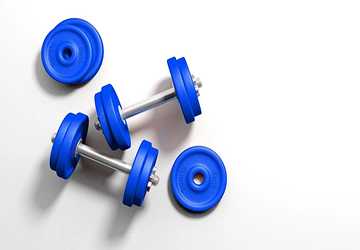What Should and Shouldn't You Do to Your Skin
Muscle recovery after physical exertion is critical for optimal athletic performance and long-term health. This manuscript illustrates essential muscle recovery techniques, explains what to do after exercise, and provides detailed guidelines for post-exercise recovery.

Learn about muscle regeneration.
The need for recovery
Restoring muscle tissue is critical to preventing injury and ensuring continued performance improvements during physical exertion. With proper recovery, athletes can achieve peak performance throughout training and reduce the risk of overexertion and weakness.
Muscle Recovery Secrets
1. Hydrate: Replenishing fluids after exercise is critical for recovery and full-body function. Ensuring optimal hydration is essential to restore electrolyte balance, support metabolic processes, promote homeostasis, and enhance physiological homeostasis.
2. Nutrition: Consuming protein and carbohydrates after a workout helps restore muscle fibre and replenish glycogen stores, which is critical for maintaining energy levels. Eating nutrient-dense foods provides essential micronutrients, antioxidants, and macronutrients to promote optimal recovery and enhance performance.
3. Rest: Adequate rest and rest periods are essential for muscle recovery and physiological adaptation. By prioritizing adequate rest, the body can optimize recovery by repairing and rebuilding muscle tissue, improving overall resilience and performance while reducing the risk of overtraining and injury.
What to do after training
Take immediate action after exposure.
●Moderate cooling: Perform gentle stretching or moderate activities to lower your heart rate gradually.
●Replenish fluids: Drink water or electrolyte-replenishing drinks to restore body fluid balance.
nutritional strategies
●Protein intake: Eating a protein-rich snack or drink shortly after exercise can promote the synthesis of new muscle tissue.
●Carbohydrates: Consuming carbohydrates after training can effectively replenish depleted energy reserves.
Post-exercise recovery guide
Proper recovery techniques
●Gentle activity: Pilates or walking exercises can help improve lactic acid distribution.
●Cryotherapy: Using cryotherapy can significantly reduce inflammation and relieve myalgia.
extended recovery protocol
●Regular sleep pattern: 7-9 hours sleep every night to promote muscle recovery.
●Regular massage therapy improves blood circulation and relieves muscle stiffness.
●Organized rest periods: Arrange a regimen that alternates vigorous activity with rest intervals to optimize recovery.
Avant-garde techniques for muscle regeneration
restorative addition
●Omega-3 fatty acids: These supplements relieve muscle inflammation and tenderness.
●Branched-chain amino acids (BCAA) are essential in inhibiting muscle catabolism after exercise.
Technology Assisted Rehabilitation
●Compression garments can promote blood circulation and relieve discomfort after exercise.
●Myofascial relaxation: Using tools such as a foam roller can help relieve muscle stiffness and improve flexibility.

What to do after training: precautions and prohibitions
Recommended practices
●Continuous replenishment of water: Continuous replenishment to compensate for the lack of body fluids during exercise.
●Regular Stretching: Incorporate flexibility exercises into daily activities to improve muscle flexibility.
●Vigilant monitoring: Carefully monitor the effectiveness of recovery methods.
Avoidance measures
●Overtraining: Avoid overtraining, which can cause excessive tension in already sensitive muscles.
● Neglecting restful sleep: Avoid restricting your night's rest, which can hinder muscle recovery.
●Ignore persistent discomfort: Pay attention to body signals; persistent pain may indicate a more severe problem.
Refined recovery method
Improve hyperoxic therapy.
●Increase oxygen absorption: Entering the field of intensive hyperoxia therapy, the increase in air pressure significantly increases the body's absorption of oxygen, accelerates the regeneration of muscle fibres, and effectively relieves inflammation.
Improve electrical microstimulation.
●Muscle fibre activation: Myoelectric stimulation delivers precise electrical pulses to target muscle fibres. Initiating contractions can enhance blood circulation and accelerate the repair and strengthening of damaged muscles.
Improve neurocognitive recovery.
Advanced neurofeedback applications
●Optimize neural synchronization: Use a complex neurofeedback system to carefully monitor and regulate brain wave activity to achieve harmonious physical and mental collaboration and optimize physiological recovery.
progressive autoregulation
●Improved Stress Reduction: Immerse yourself in Progressive Autogenic Regulation, a complex relaxation regimen that trains your physiological responses to verbal cues, significantly reducing stress levels and promoting restorative motivation.
Improve environmental restoration.
Isolation Floatation Therapy
●Enhanced Hydrostatic Rest: Participate in Isolated Floatation Therapy and experience deep relaxation and stress relief while floating in a salt-saturated water solution. This treatment significantly reduces systemic cortisol and increases endorphin levels, resulting in excellent muscle recovery and mental calm.
Advanced biophilic integration
●Optimize environmental harmony: Innovatively redesign the recreational environment and incorporate natural elements such as plants, water features, and solar radiation to create an atmosphere that improves air quality and promotes tranquillity, creating the best recreational atmosphere.
State-of-the-art recovery diagnostics
Personalized genetic recovery map
●Tailored genotype recovery plan: Implement a personalized genetic recovery map and decipher the individual genetic markers that affect recovery ability so that you can create a customized recovery plan that matches your unique physiological constitution.
Complex imaging of the musculoskeletal system
●In-depth tissue analysis: Apply advanced imaging technology to obtain complex visualization of musculoskeletal components. This provides comprehensive insights into tissue integrity and recovery progress, enabling carefully tailored therapeutic interventions.
The consequences of ignoring muscle regeneration
Increased risk of musculoskeletal injuries
Neglecting proper muscle recovery procedures may increase the likelihood of musculoskeletal injuries such as strains, sprains, and microfractures. Muscles that lack the necessary recovery time before being subjected to further stress are more susceptible to these problems.
Worsening of athletic performance
Ignoring the principles of muscle regeneration can lead to decreased athletic performance. Overuse of muscles can reduce strength and performance and impair the ability to maintain performance levels during physical activity, impacting overall health and athletic ambitions.
Muscle pain that lasts longer
Muscle soreness must be followed for it to persist. This ongoing discomfort can interfere with subsequent exercise and daily functioning, reducing quality of life and productivity.
Accumulation of physical and mental fatigue
Neglecting recovery measures can lead to the accumulation of physical and mental exhaustion. This leads to persistent lethargy and reduces a person's enthusiasm and ability to complete practical and safe exercises.
Slow progress on fitness goals
Optimal muscle regeneration is essential for muscle building and strengthening. This critical phase is necessary to maintain progress toward fitness goals because the body cannot regenerate and strengthen from physical exertion.
Increased susceptibility to overtraining syndrome.
Continuous exertion without adequate rest periods can trigger overtraining syndrome, caused by performance plateauing and characterized by mood swings, changes in basal heart rate, sleep disturbances, and an increased risk of infection.
Conclusion
Incorporating these muscle recovery tips will significantly increase the effectiveness of your post-workout recovery. Knowing what to do after a workout is crucial to your physical fitness plan. Following these guidelines will enhance your recovery process and ensure your muscles are optimally prepared for future endeavours.







